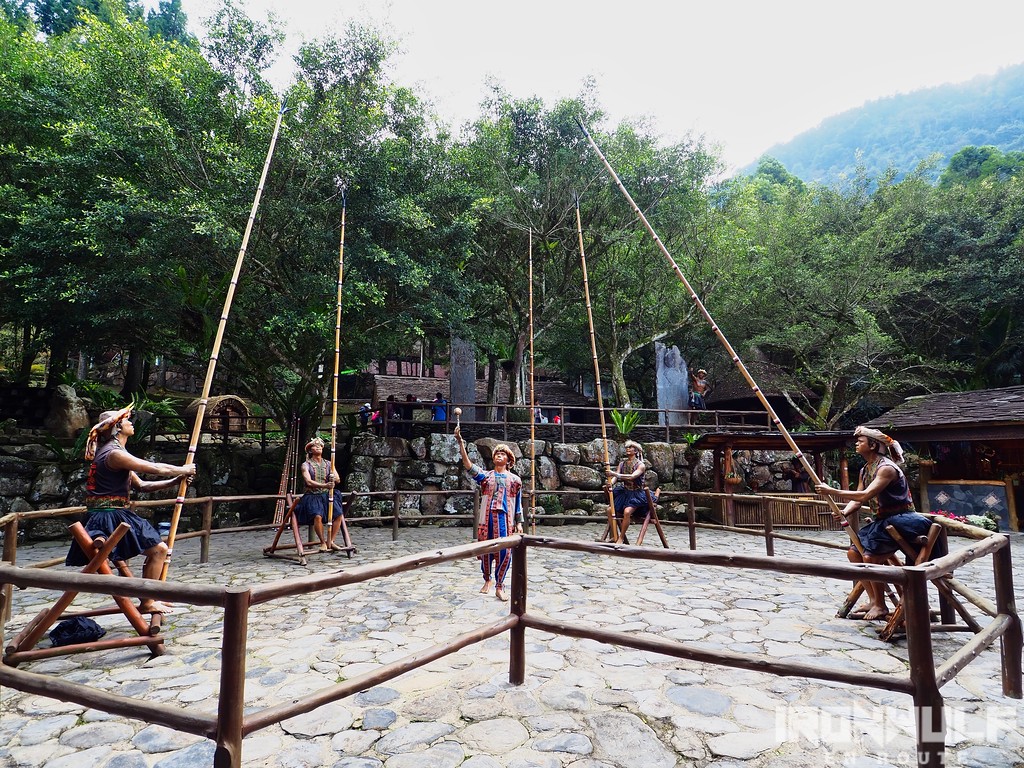I’ve been interested with the aboriginal heritage of Taiwan since it has close proximity with our islands. I know some Itbayaten have Taiwanese ancient lineage based on the paler complexion and somehow thin eyes. Could ancient Taiwanese have stone houses similar in Batanes? That I have to see as we visit the Formosan Aboriginal Culture Village in Yuchi, Nantou County, central Taiwan.
Formosan Aboriginal Culture Village
The 62-hectare amusement park was opened in 1986. It sounds old but they have maintained this park quite well that it still looks good. The theme is very tribal and true to the Taiwanese aboriginal inspiration. It has three main sections: The European Gardens that is considered the largest in its European theme, the Amusement Isle that has the tallest free-fall ride in the country and the Aboriginal Village, the largest outdoor museum in the country.

One access to this park, which is located around 770 meters above sea level is through the Sun Moon Lake Ropeway cable car. This by itself is quite a scenic ride already. Seeing slope of greens, trees and mountains is already a treat for me. The Formosan Aboriginal Culture Village is also known for celebrating the Sakura Festival as seen from the numerous cherry trees in the area. It was not yet in bloom when we went there as they are usually in season around February onwards.
Aboriginal Village
The Aboriginal Village was our main destination at the park to give us a glimpse of life and heritage of the “Formosan” which refers to the people living in Taiwan. Nine villages representing nine tribes were recreated in this outdoor museum. But first we watched a cultural show at the Naruwan Theater. It was an interesting dance and song showing the way and life of the tribes. As well as mini games with audience participation. Colors and patterns reminds me so much of our Ifugao people.
Then we went around the villages whose different houses were recreated to get a feel of their living conditions. There were stone houses quite similar to Ivatans. There also houses of the same concepts as the Ifugao. The beliefs are somewhat parallel to ours as their ancient people also believes in spirits and supernatural.

The indoor museum was also quite fascinating. I inspected the long wooden board with carvings which is an ancient calendar from the Bunun Tribe. There are other Austronesian arts and images which looks similar to our bulul. I was so engrossed with the details I didn’t know the group already left and I was there on my own.
Essential Info
It was a fascinating side-trip despite the short period at the park. We went back at the cable cars to continue to one of my most awaited destination in our itinerary, the Sun Moon Lake. In the meantime, here are information on visiting the park.
Going to Formosan Aboriginal Culture Village
By public transport, there are two options:
- Take the THSR to Taichung Station, then ride a Nantou Bus (bound for Puli, Sun Moon Lake) to Formosa Aboriginal Culture Village stop. Travel time is 1 hour and 30 minutes. Fare is around NTD 200.
- From the Taichung Railway Station, ride a Renyou Bus (bound for Sun Moon Lake) to Formosa Aboriginal Culture Village stop. Travel time is 1 hour and 30 minutes. Fare is around NTD 200.
Formosa Aboriginal Culture Village
No. 45, Jintian Alley, Dalin Village,
Yuchi Township, Nantou County
Contact: +886 4 9289.5361
Facebook: /facv.nine/
Operating Hours:
Park hours: 09:30-17:00 (weekdays) / 09:30- 17:30 (weekends)
Ticket Booth hours: 09:30-15:00 (weekdays and weekends)
Ticket Prices:
Adult NTD 850
Student NTD 750
Primary NTD 650
Elder/ Disabled /Kid/Preg. NTD 420

Ferdz Decena is an award-winning travel photographer, writer and blogger. His works has found print in publications such as Singapore Airlines’s Silver Kris, Philippine Airlines’ Mabuhay, Cebu Pacific’s Smile and Seair InFlight. He has also lent his expertise to various organizations like the Oceana Philippines, Lopez Group Foundation, Save the Children and World Vision, contributing quality images for their marketing materials.











